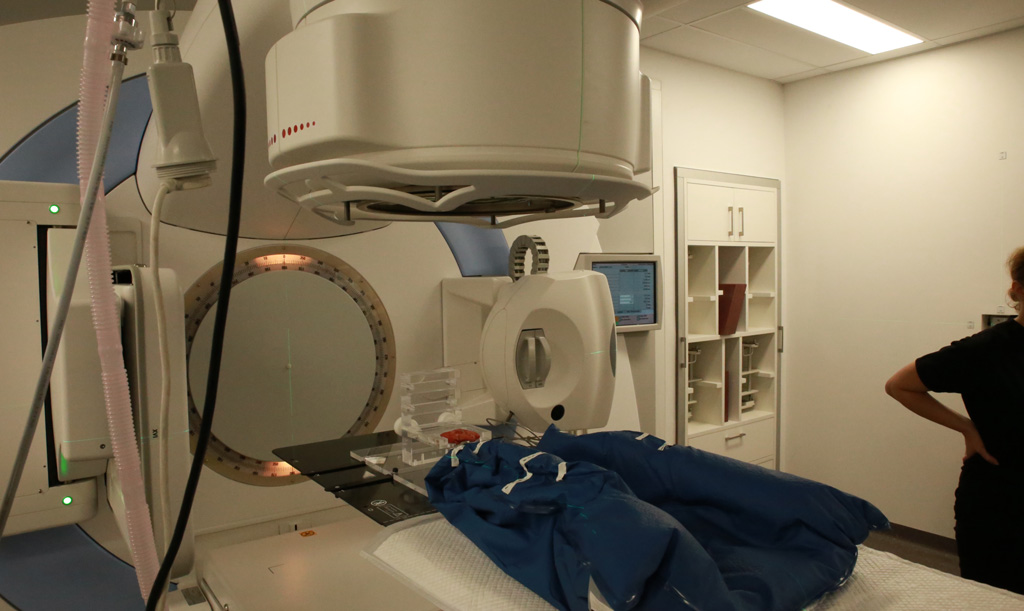Linear accelerators are widely used for the treatment of cancer using high radio-frequency electromagnetic waves to speed up electrons to increased energy in a linear path inside of an accelerator waveguide. The frequency is medical LINACs is around 3 billion Hertz. As the most common form of external beam radiation treatment after a cancer diagnosis it is crucial for end users to have a basic understanding of what a LINAC is. As well as how the major components within LINAC systems work in conjunction with one another to produce radiation treatment.
Consider how a microwave oven works. This is in the most basic sense how a linear accelerator operates. A LINAC uses microwave technology to accelerate charged particles within a waveguide, tube like structure. These electrons then strike a metal target producing photons. It is these photons that are focused on the cancerous tumor. This radiation is delivered in the shape of the tumor to avoid contact with healthy tissues with the use of a variety of positioning devices. Now that we have a general understanding of the linear accelerator lets take a look into the major components that allow LINAC systems to operate as we know them to as of today.
Drive Stand:
A drive stand is a rather large cabinet, usually rectangular in shape, that secures the LINAC machine to the floor of the treatment room that houses the gantry.
Gantry:
The gantry is a moveable frame of the LINAC that is located in the drive stand and rotates on a horizontal axis. It helps direct the photon beams directly into the patient’s tumor. The gantry rotates 360 degrees on its axis. There are three components that are found within the gantry: the electron gun, accelerator structure, and treatment head.
Klystron:
The klystron is a major component that is located within the drive stand that delivers the microwave energy that is used to accelerate the electrons through amplified RF electromagnetic waves.
Accelerator Guide:
The energy from the klystron moves to the accelerator structure to speed up electrons.
Treatment Head:
The treatment head of a LINAC encases the components that shape the radiation to the specific size of the cancerous tumor. This can include: bending magnets, primary collimator, beam flattening filter, wedges, blocks, and compensators.
Cooling System:
The water cooling system in a linear accelerator is located within the drive stand and gantry to regulate the temperature in the space.
In our next installment we will look in greater detail to the treatment head of a LINAC system and the variety of components housed within that help shape radiation beams into the shape of different cancerous tumors.
Learn more about Radparts and the variety of services and parts they offer to repair medical equipment including: linear accelerators parts, CT scanners parts, linac parts, and radiation oncology equipment at www.radparts.com. To contact one of our medical equipment repair specialists for parts or service call toll free 877.704.3838 for 24/7/365 support



